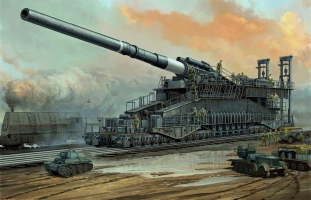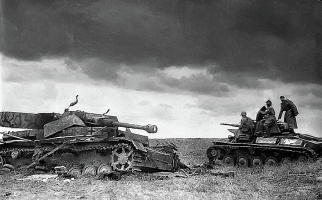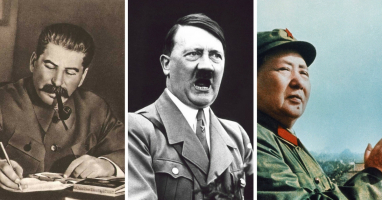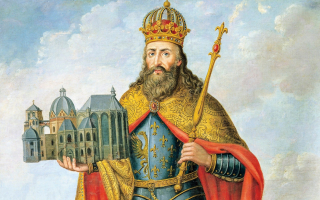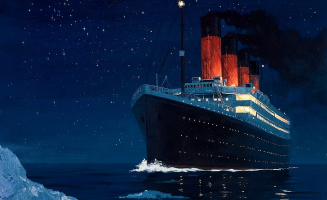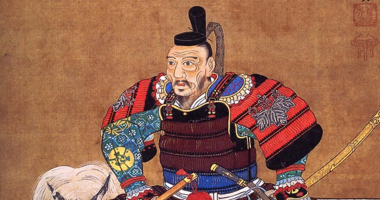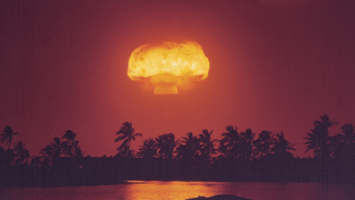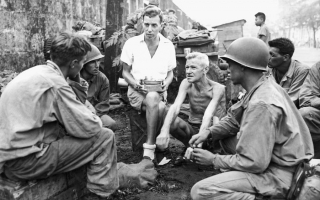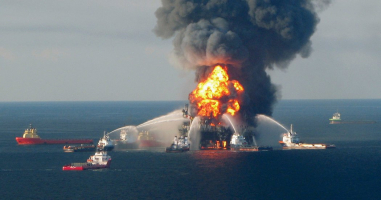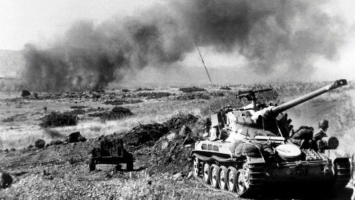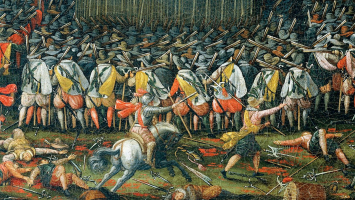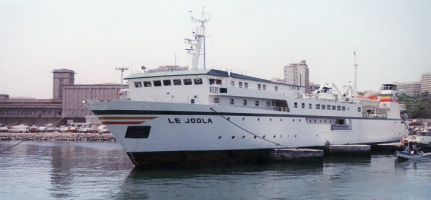Top 10 Most Unfair Battles in History
People often forget how uncommon those circumstances are in real life because we're so used to seeing stories in pop culture about scrappy bands of brothers ... read more...using cheap equipment to defeat massive legions with high-tech weapons. There have been numerous essays written on it, and far too many of them finish with the conclusion that the outnumbered army will triumph. Only the most ardent war enthusiasts won't be unfamiliar with at least a few of the conflicts depicted here, so it will be intriguing to see whether the underdogs succeeded or whether numbers, weaponry, and equipment won out.
-
The sultan of Zanzibar, an island off the coast of Tanzania in Eastern Africa, passed away on August 25, 1896. The British under Basil Cave believed they could appoint Hamud ibn Mohammed as the next sultan because Zanzibar was a British colony and the sultan was simply a ceremonial head of state. Prince Khalid ibn Barghash, together with 1,000 soldiers and 2,000 civilian supporters, had different plans, and on August 26 he took control of Stone Town's royal palace.
He also brought a four-piece artillery battery and the Zanzibar ship Glasgow, a yacht on which some cannons had been installed. The British gathered 1,000 soldiers to remove him, but it was only a formality because the Prince's forces might have been bombarded by five British cruisers. Although they genuinely were awaiting official approval from London, they granted the Zanibar soldiers a day to submit. It was dismissed by the Prince as a bluff.
The warships proved conclusively the following day that they had not been playing a bluff. When the Glasgow swiftly sank and caught fire, it was clear why yachts are not traditional battleships. Only one British sailor was hurt, while the Zanzibar land and fleet collectively suffered 500 casualties. There are different accounts of how long it took the Prince to submit, but every one places the time considerably under an hour.The Prince was transported away to German East Africa, where he remained free until 1916 when the British invaded the German territory and captured him, despite his brief but brutal stand. To Saint Helena he was delegated. He may have been the most quickly deposed national leader in history, but unlike Napoleon before him, he was permitted to go back to his country and live out the remainder of his days until 1927.
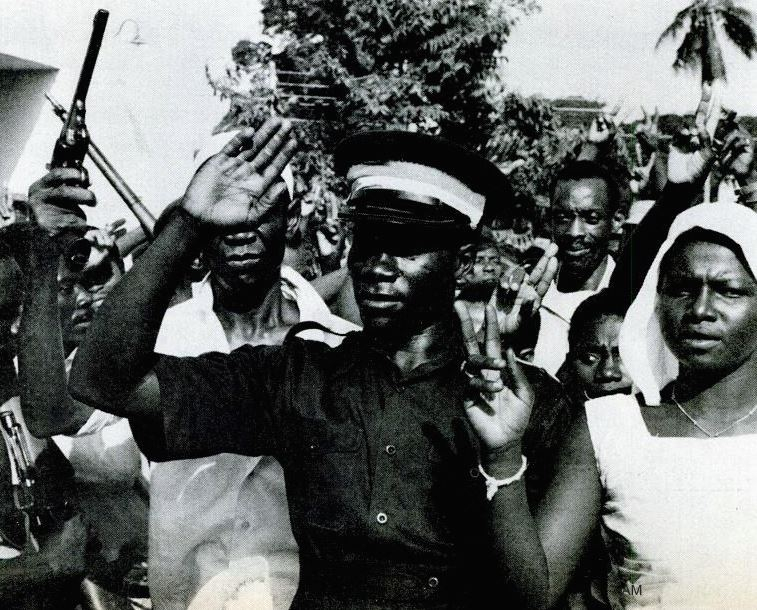
https://azariambughuni.blogspot.com/ 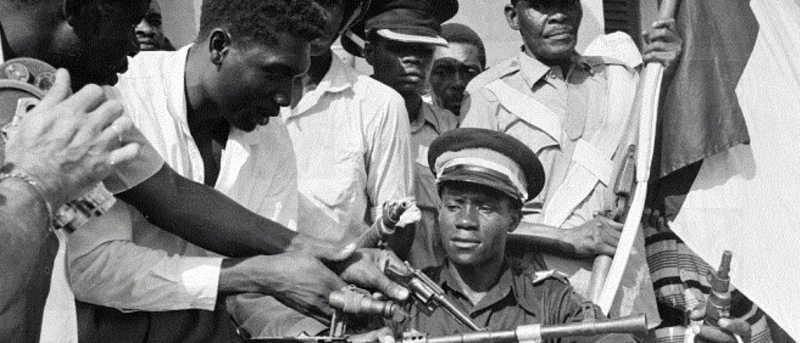
https://www.trtworld.com/ -
The first Gulf War, the Kosovo War, and other conflicts cast a shadow on the Croatian War of Independence in the eyes of the world. But one of the most spectacular battles in recent years took place within it. In 1991, the Yugoslavian People's Army, a military force made up of Yugoslavians and Serbians determined to put down the independence movement, came up against the Eastern Croatian settlement of Vukovar.
There were about 2,000 defenders of Vukovar, of which only 300 were members of the national guard, 300 were police, and the remainder were civilian volunteers. Only 50% of the population had even a hunting rifle. They were fortunate to own a respectable collection of rocket launchers. The attackers had more than 35,000 soldiers, 400 tanks, and air support against them. On August 25, after a protracted artillery barrage, the battle started.
The Croatians stretched out the war for 87 days against the enemy's overwhelming power, even on days when up to 11,000 bombs were shot into the town. The Croatians not only lost many soldiers to the invaders while also suffering 1,600 losses themselves, but they also destroyed more than 110 tanks. While severely demoralizing the Yugoslavian military, the protracted stand was strategically crucial for the remainder of Croatia in terms of mobilizing armed forces and rousing the populace. In January 1992, the People's Army retreated from Croatia while declaring victory, much like the Ottomans had done before them.
Long after the conflict was over, the city was still suffering devastation. Tens of thousands of non-Serbian inhabitants were ejected from the village shortly after. For those who persisted, everything from sewage to electricity had been disrupted, and many structures, including the hospital, had been destroyed. Serbian villagers faced brutal treatment once Croatia seized control (who had comprised about a third of the population). Many buildings in Serbian neighborhoods remained unrepaired even decades afterwards.Date: 25 August – 18 November 1991(2 months, 3 weeks and 3 days)
Location: Vukovar, Croatia
Result: Pyrrhic Yugoslav victory- Expulsion of Croat and other non-Serb civilians from Vukovar
- Vukovar incorporated into SAO Eastern Slavonia, Baranja and Western Syrmia
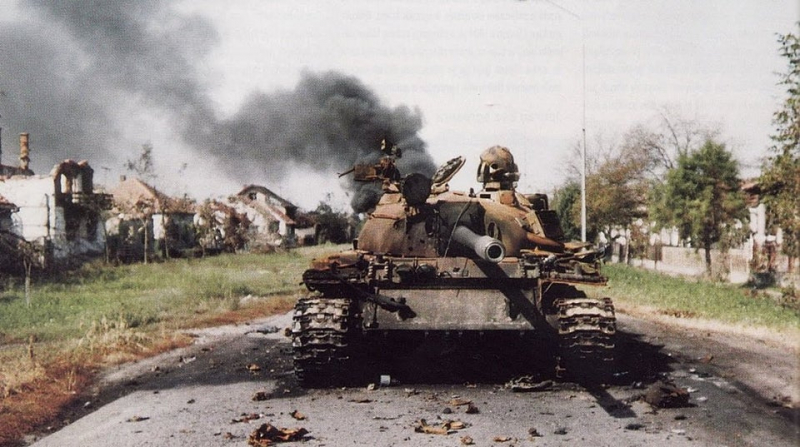
https://www.reddit.com 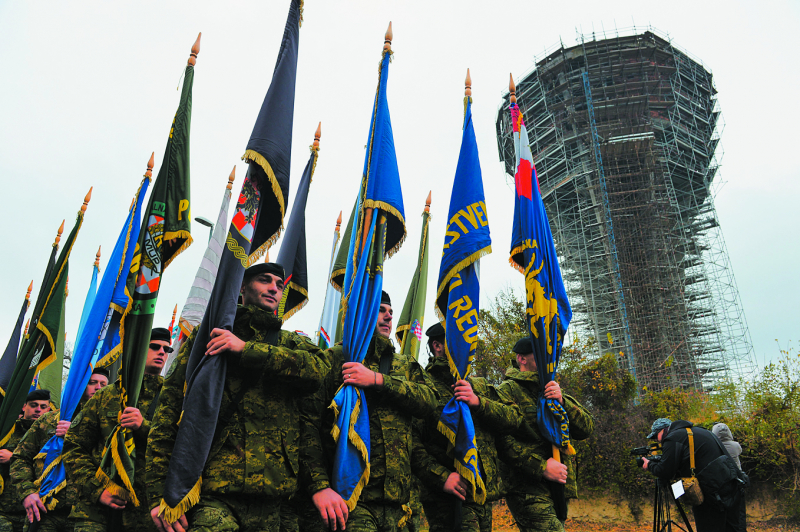
https://hrvatski-vojnik.hr - Expulsion of Croat and other non-Serb civilians from Vukovar
-
From the Battle of Blood River to Rorke's Drift, firepower helped relatively small European armies to defeat vast numbers of native men using antiquated weapons during the Age of Colonization. Therefore, it was exceptional for the British forces, led by Lieutenant General David Cameron, to attack the fort of Gate Pa on April 29, 1864, in New Zealand. They had 1,700 soldiers as opposed to the 250 Maori soldiers Rawiri Puhirake had manning his defenses, along with heavy artillery. They were insurrecting in opposition to a British land grab. The British had spent days bombing the defenders, causing 15 casualties while doing so, which widened the deficit.
To the astonishment of many, the attackers were forced into constrained approaches to Gate Pa, which caused the onslaught to halt and become disorganized. The Maori then started killing off the commanders, leading to a general rout. They lost nearly half as many people while killing or injuring more than 110 assailants. Despite winning, the defenders snuck away that night in the shadows.
Even though the Maori were bolstered to more than 500 troops this time, the British, who were driven by a desire for vengeance, ultimately prevailed against them on June 20, 1864, in the follow-up battle of Te Ranga. Despite the fact that a peace treaty was formed soon after, it was incredibly liberal by modern standards because it provided food and water for the native population. It appeared that Gate Pa had more confidence-shaking effects on the colonizers than they were willing to acknowledge.Date: early 1864
Location: Pukehinahina (puke hill, hinahina or mahoe tree) on 29 April
Result: Māori victory
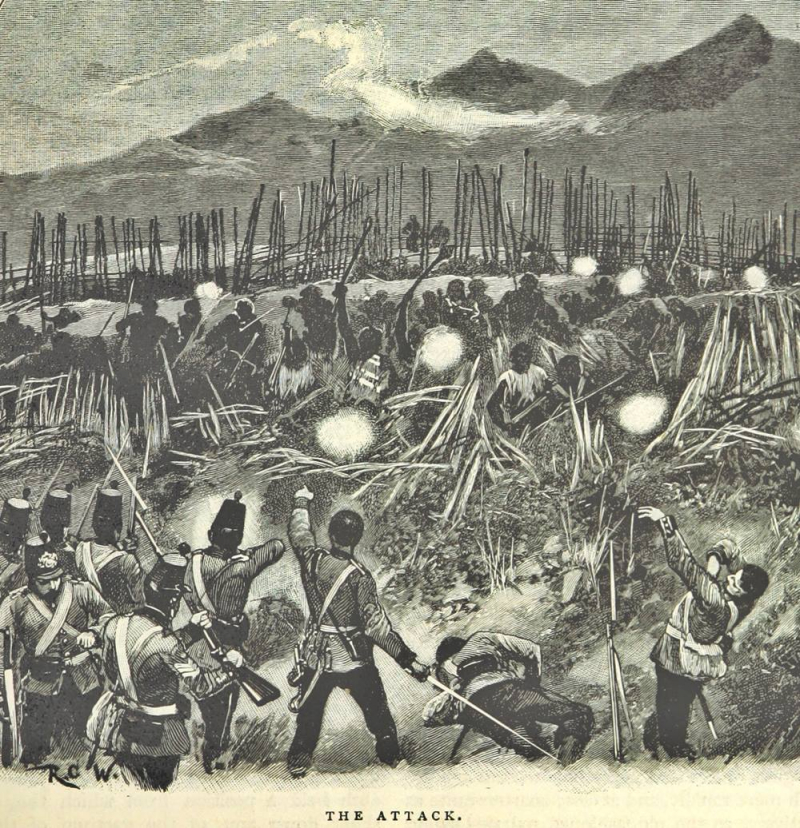
http://commons.wikimedia.org/ 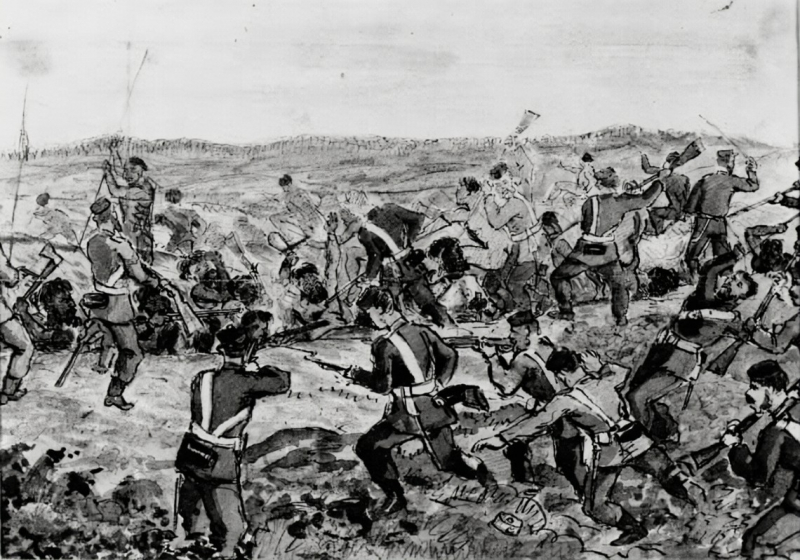
http://theericle.com/ -
On August 2, 1566, picture yourself as one of the Hungarian stronghold's defenders serving under Count Nikola Zrinski. Szigetvár is being defended by 2,300 Croatian and Hungarian soldiers. Sultan Suleiman's 100,000-strong Ottoman army has started to arrive. The Ottomans also possessed 300 guns. The only real advantage the defenders have is a well-constructed wall and moat. Would you have the fortitude to withstand those challenges even for a day?
The Ottomans mounted three significant assaults during the following month in between intense bombardments. The Ottomans lost more people to disease than to battle because they were stranded in location in such huge numbers, most notably Sultan Suleiman. After the Sultan's death was kept a secret, the Ottomans finally overran the Szigetvár fortifications the following day. Even that came at a high cost for them because Zrinski had planted explosives to completely demolish the town and eliminate many more Ottomans. The Ottomans withdrew as a result of the exceedingly pyrrhic triumph.
The ultimate sacrifice made by Zrinski and his troops may not have been required, casting the heroic in a more tragic perspective. In contrast to the huge Ottoman army, more than 80,000 Habsburg soldiers under Emperor Maximilian were stationed close to Szigetvar and had a month to end the siege. Given that there was such a sizable army prepared to meet the Ottomans in any case, it doesn't seem plausible, as some have said, that the fate of Eastern Europe would have been in doubt if the Suleiman had survived or the citadel had fallen a little sooner.Date: 6 August 1566 – 8 September 1566 (1 month and 2 days)
Location: Szigetvár, Kingdom of Hungary, Habsburg monarchResult: Ottoman victory
Territorial changes: Ottomans capture Szigetvár, joining it to the Ottoman Budin Eyalet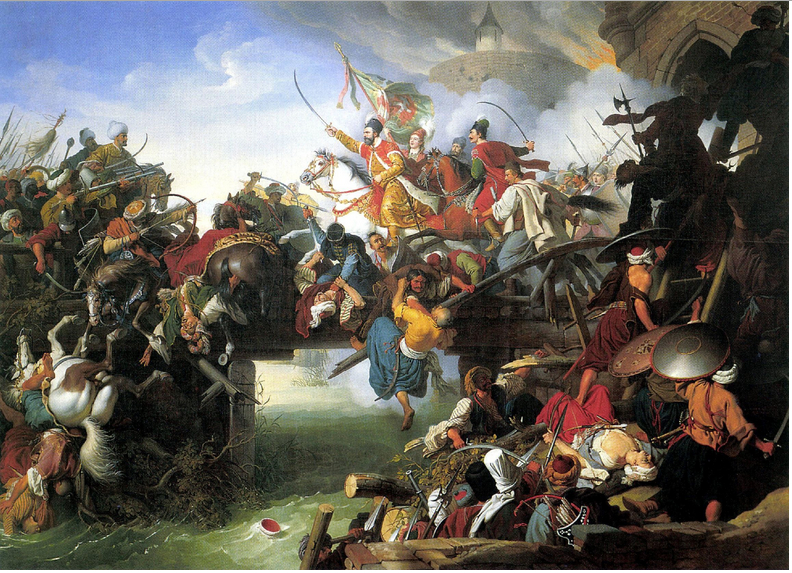
https://bluebig.wordpress.com/ 
https://alchetron.com/ -
The Italian Wars of the 16th century are taught much less frequently than the periods when Rome fell to the Visigoths in 410 and 476, which put an end to the Western Roman Empire. One such instance is the attack on May 6, 1527, by the army of the Holy Roman Imperial under Charles III, the Duke of Bourbon. They had 34,000 people, compared to Rome's 5,000 defenders. There were just 2,000 professionals in the top-tier Swiss Guard. The Holy Roman Emperor Charles V's forces were underfed and he abandoned his cannons to reach the city more quickly, thus the defenders at least had the advantage of artillery.
A fog bank rolled in, giving the Imperial Army one more edge as they battled imprecise small-arms and artillery fire to reach the city walls. It was just bad luck that one of the bullets struck and killed Charles III. Without Charles to act as a pacifying influence, his anti-papal troops turned into rabid mobs of German, Italian, and Spanish soldiers who had little patience for defenders or civilians. 42 Swiss Guards were still alive.
Pope Clement VII just about made it out of the bag as soldiers fired at him. Rome's population fell from approximately 55,000 to less than 10,000 as a result of the devastation. They had to make due with the fact that Rome had little food and a serious illness outbreak brought on by all the bodies left in the streets, which killed many of the invaders, as retribution. The Swiss Guard continues to honor the guards who gave their life that day to protect the papacy.
Date: 2 March 537 – 12 March 538 AD
Location: Rome, Italy
Result: Roman victory
Territorial: changes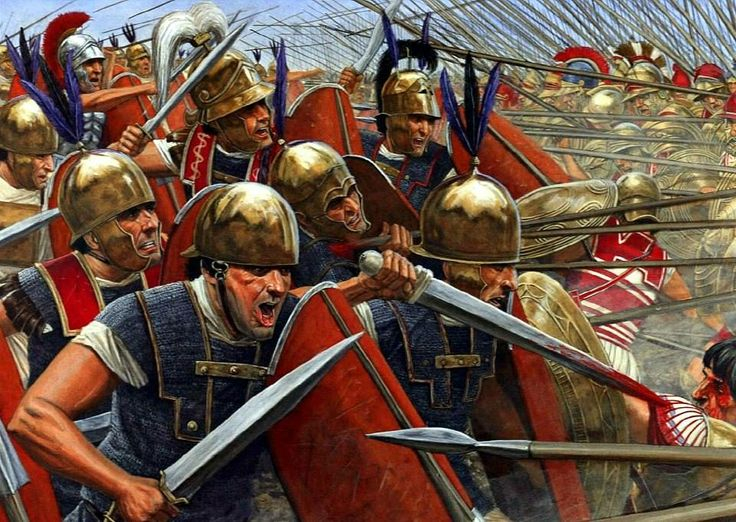
https://sites.psu.edu 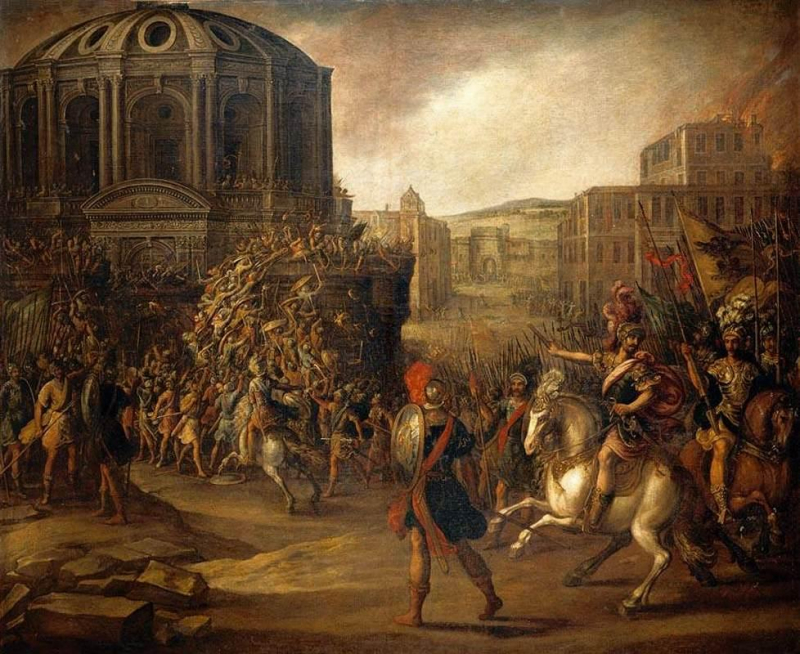
http://www.history.com -
Speaking of ironclads, on May 21, 1879, off the coast of Iquique, Peru, the Peruvian ironclad Huacar engaged the Chilean corvette Esmeralda. Captain Arturo Prat's Esmeralda was one of the oldest ships in the Chilean navy and was only brought into action because Chile needed to blockade the Peruvian-Bolivian alliance. Commander Miguel Seminaro's ship was a completely new ship with armament that shot 300-pound rounds.
The Huacar's crew started firing almost immediately, and their bullets ripped straight through the Esmeralda while the corvette's bullets simply bounced off the iron armor. In order to prevent the Peruvians from firing for fear that they may miss and shell the town, Prat then effectively held the town of Iquique hostage by floating the Esmeralda between the Huacar and the settlement. This attempt to utilize the town as a human shield was unsuccessful when Iquique artillery crews opened fire on the wood ship. After slamming the Esmeralda, Seminaro opened fire at point blank range. The Huacar had to repeatedly ram the Esmeralda until it sank because its crew was obstinately refused to capitulate. Captain Prat's dead body was left on the ironclad during the attempted boarding.
Esmeralda's defeat was utterly one-sided, but Prat's bravery inspired the Chilean people, and the day was declared a national holiday. Additionally, the Chilean navy was more powerful and altogether larger than the Peruvian-Bolivian navy. A squadron of six Chilean warships, including two ironclads, destroyed the Huacar on October 9, 1879, after which it was surrendered. But Seminaro did manage to secure one straightforward triumph.Date: May 21, 1879
Location: Off Iquique, Pacific Ocean
Result: Peruvian victory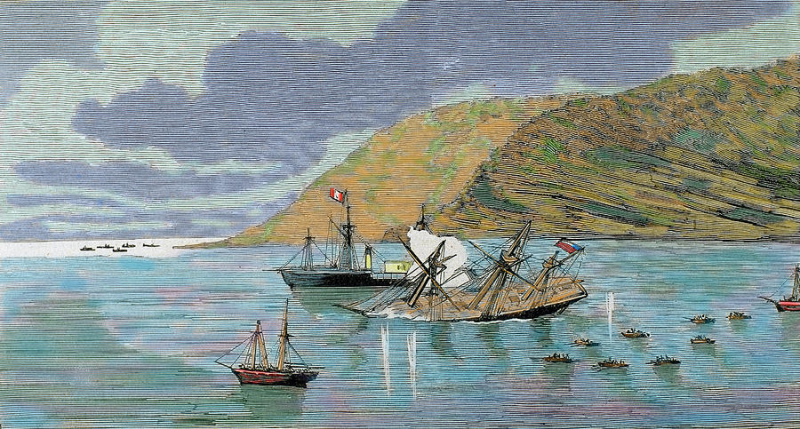
https://fineartamerica.com 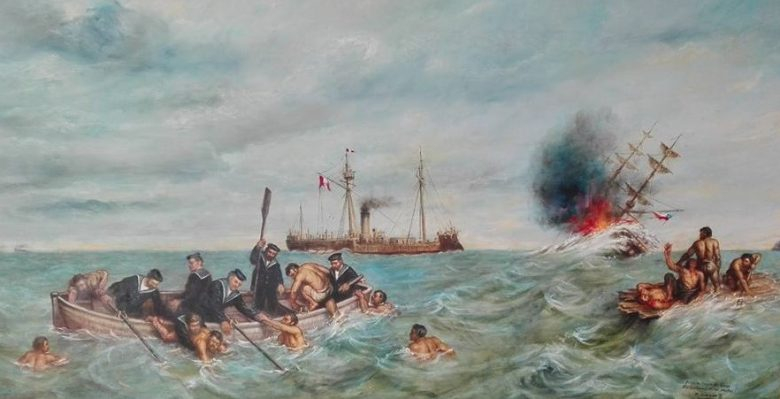
https://www.grau.pe -
The location of the conflict between the newly united German Empire and its northern neighbor, Denmark, is not far from the location of the preceding article. The Danes had placed a great deal of faith in the Danewerk fortifications to protect their country until, in March 1864, the Prussian Army marched into the Jutland peninsula and destroyed them. The strongholds guarding Dyobbol were then invaded by 40,000 Prussian soldiers and 11,000 Danish soldiers. In support of their fortification, the Danes had the ironclad ship Rolf Krake, which was genuinely terrifying at the time because ironclads were new.
Danes were unfortunate since the Prussians also brought cutting-edge armament. They pounded the Danish defenses for weeks, even killing crew members of the Rolf Krake, and this was only two years after the renowned Merrimac and Monitor survived the American Civil War's thousands of artillery rounds with little damage. On April 18, the Prussians launched their assault and, in just 13 minutes, smashed through the Danish lines. It didn't take them much longer to destroy the enemy reserves' counterattack. In total, the Danish lost about 3,600 soldiers compared to about 1,300 Prussians.
The Combat of Dybbol is particularly important since it was the first battle since the infamous Geneva Convention from the year before where the Red Cross was present to monitor it for war crimes. They thus witnessed the triumph that gave Prussia the war and announced the rise of a German Empire that would cause significant problems for Europe in the following century.Date: 7 April – 18 April 1864
Location: Dybbøl, Denmark
Result: Prussian victory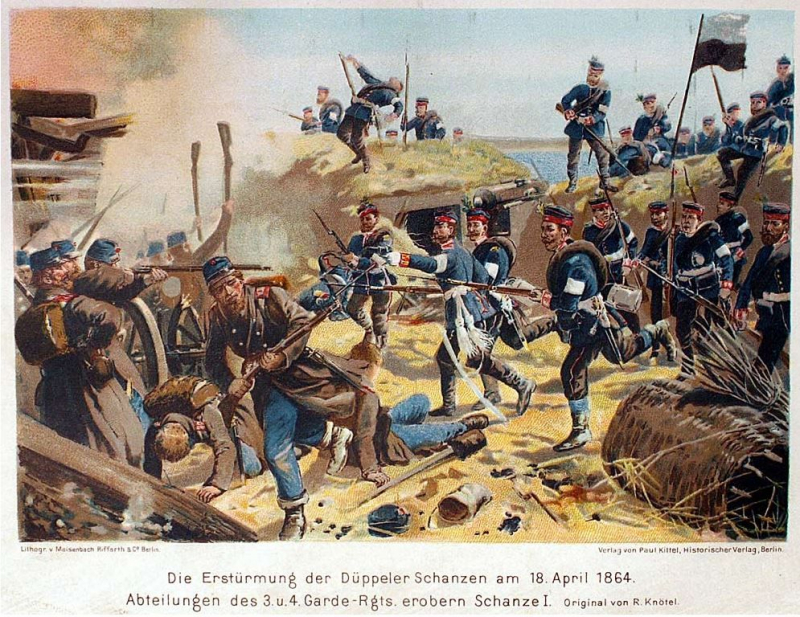
https://www.pinterest.co.uk/ 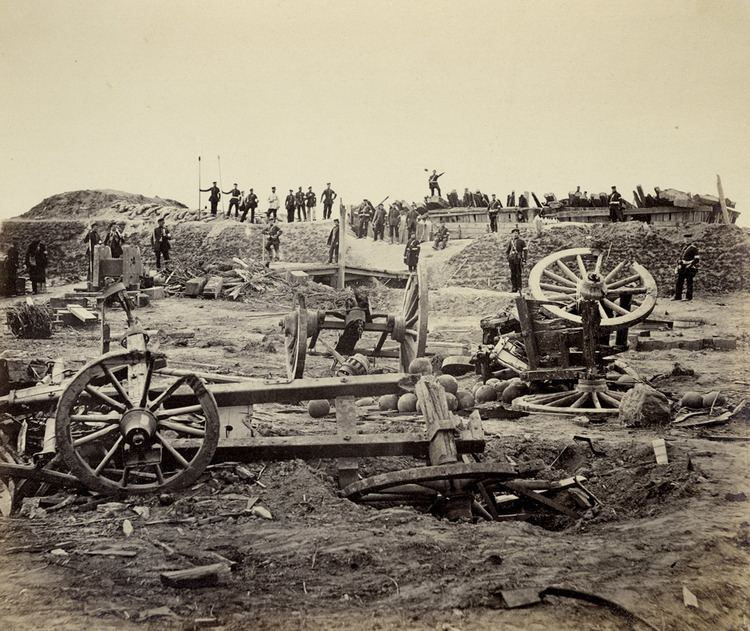
https://alchetron.com -
In what is now western Poland, a Swedish force of about 9,400 faced a Polish-Russian army of about 20,000. In addition to having a larger total, the allied army led by Johann Schulenberg possessed 32 artillery pieces compared to none for the Swedish. Carl Rehnskiöld, the Swedish commander, nonetheless believed that fortune would favor the brave and set up his soldiers for a pincer attack.
Rehnskiöld found himself in an odd situation where his mistrust of emerging technology served him well. Contrary to popular belief, guns and cannons were not fully developed in 1706 to the point that they could destroy opposing forces the way they were in the 19th century.Armed lines of soldiers might fire a volley and rarely strike anyone at the time since firearms were frequently so imprecise.
At Fraustadt, the Swedish forces were told to charge the Germans aggressively rather than reloading, and many did not even get a chance to fire a shot. Due to this, the Poles and Russians had only a little window of opportunity to fire before the enemy charged them with bayonets and, in many cases, pikes.
The conflict was ultimately won in a short amount of time, with the Swedes suffering only roughly 1,500 casualties compared to their enemy's 15,000 losses. Even yet, the Russian Coalition ended up winning the conflict in 1721, which marked the end of the Swedish Empire's dominance in the Batlic region and the beginning of the Russian Empire.
Date: 2 February 1706 (O.S.)3 February 1706 (Swedish calendar)13 February 1706 (N.S.)
Location: Fraustadt (Wschowa), Poland
Result: Swedish victory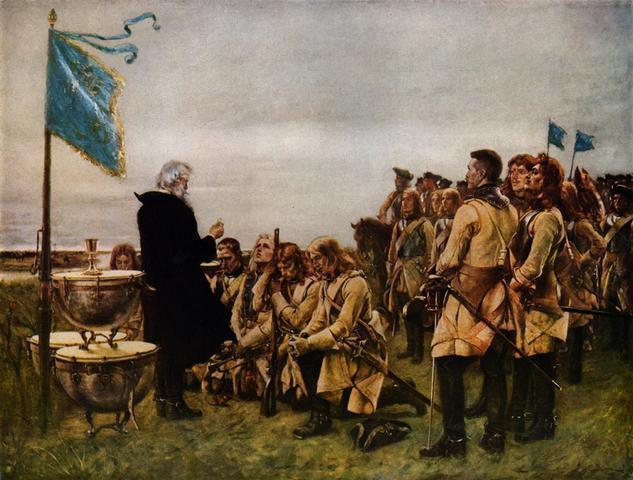
https://kabinettskriege.blogspot.com 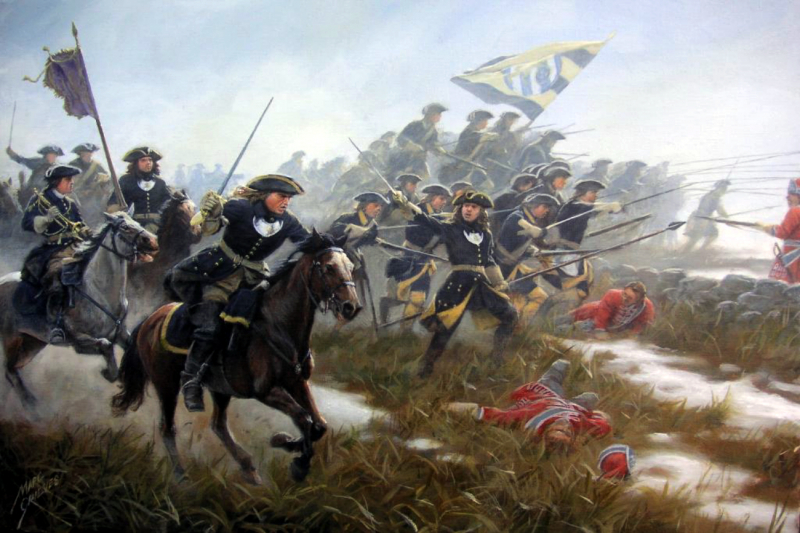
https://www.pinterest.es/ -
By 1953, the Korean War had come to a standstill, even at Outpost Harry, a UN coalition outpost located in the middle of the Koreas, 60 miles north of Seoul. The People's Volunteer Army's 74th Division launched an 88,000-shell bombardment on the defenders on June 10. K Company, one of five companies that would hold Outpost Harry, was then attacked with artillery assistance (four were American, one was Greek). While Outpost Harry's elevation of 1,280 feet gave it a substantial advantage, it also had a disadvantage in that it was more difficult to supply and limited the UN forces to only deploying one company at a time.
The conflict would last for eight days, with the defenders being compelled to take a chance by hurling flaming 55-gallon napalm drums at the oncoming aggressors. The Chinese soldiers showed great bravery despite suffering significant losses, and the defenders frequently had to engage in hand-to-hand combat.
Only Sergeant Ola Mizes received credit for the deaths of 65 attackers. The 74th Division stopped attacking on June 18, 1953, having sustained 4,000 losses and being classified as a non-operational unit. 200 of the defenders were dead or missing. It may be said that it was all for naught because only 15 days later, a cease-fire that was universally accepted as the end of the Korean War was signed.
Date: 10–18 June 1953
Location: near the Iron TriangleResult: Greek-American victory
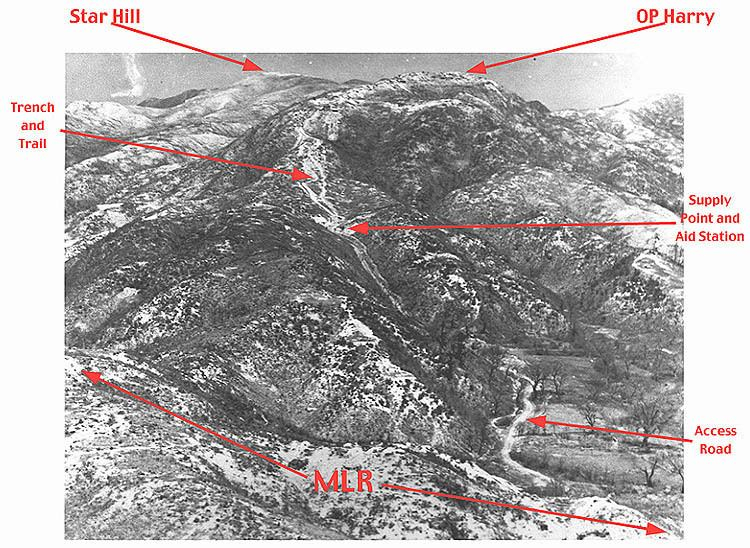
https://alchetron.com/ 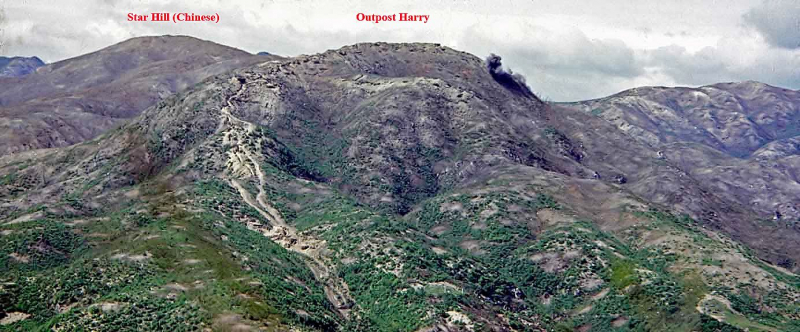
https://www.pinterest.com/ -
Even though it was one of the most significant conflicts of the time and in many respects the biggest fight on the continent in that century, this conflict has been mostly ignored in historical assessments of the Napoleonic Wars. Despite the catastrophes of 1812 in Russia and Spain, Napoleon Bonaparte's Le Grand Armee invaded Prussia (modern Germany) in 1813 to reassert his domination of the continent.
Napoleon was obliged to concentrate his forces at Leipzig as allied armies gathered to cut off his supply and communication connections with France. Napoleon had the most soldiers and guns under his command in one combat at the start of the conflict on October 16: 198,000 men. He had to contend with the combined armies of Prussia, Austria, and Russia, which numbered close to 400,000 soldiers and 1,500 pieces of artillery.
The French launched counterattacks against the Austrian and Prussian forces on the first day, using Napoleon's tried-and-true "divide and conquer" strategy as their sole option. However, when more soldiers approached, Napoleon's focus was diverted, and he was unable to defeat either army. Following that, it was just a matter of time before the allies crushed Le Grand Armee from every angle while neutralizing all French cavalry counterattacks with their own mounted forces.Tens of thousands of Frenchmen were left to either be cut to pieces or drown, as they started their retreat across a bridge over the Elster River on October 18. Unfortunately, the bridge was demolished well before the final troops had gone. In total, the French lost half of their artillery pieces and suffered 73,000 fatalities compared to the enemy's 54,000. Napoleon's ability to conduct war was destroyed by the fight, and even prior to it, the French would be strategically so outnumbered as to ensure that Napoleon's reign as Emperor of France would conclude with his ejection rather than his demise or retirement.
Date: 16–19 October 1813
Location: Leipzig, Kingdom of SaxonResult: Coalition victory
Territorial changes: The Confederation of the Rhine is dissolved; France loses control of territory east of the Rhine.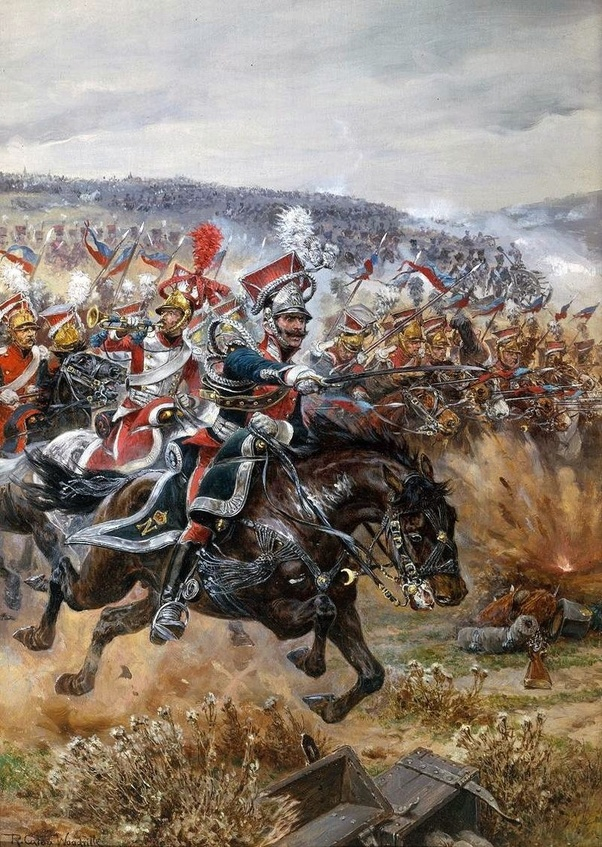
https://www.quora.com 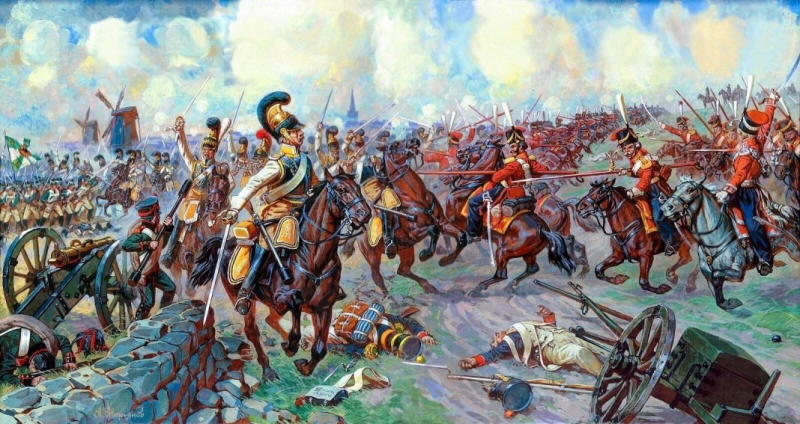
https://histori.id













